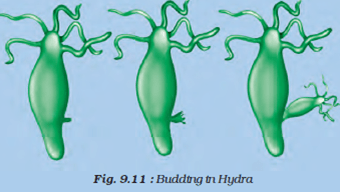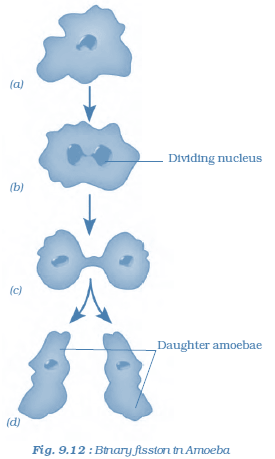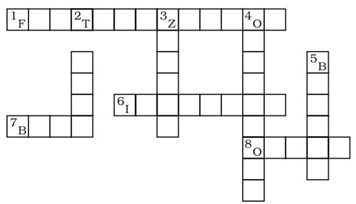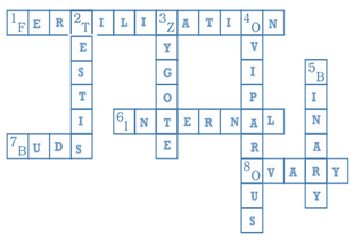NCERT Solutions for Class 8 Science Chapter 9 Reproduction in Animals
NCERT Solutions for Class 8 Science Chapter 9 Reproduction in Animals are given below. Here we have provided the best and error-free answers to all the exercise questions that will strengthen your foundation in science. Solving NCERT questions will assist you in grasping the content in the Crop Production and Management chapter in a better way.
In these solutions, we have answered all the intext and exercise questions provided in NCERT class 8 science textbook. NCERT Solutions for Class 8 Science Chapter 9 Reproduction in Animals provided in this article are strictly based on the CBSE syllabus and curriculum. Students can easily download these solutions in PDF format for free or can read them online.
Reproduction in Animals Class 8 Science NCERT Solutions
Exercise Questions
Question 1: Explain the importance of reproduction in organisms.
Answer: Reproduction is a biological process through which living organisms produce offspring similar to themselves. Living organisms reproduce to maintain their number and for the continuation of their species. Thus, reproduction ensures the continuation of similar kinds of individuals.
Question 2: Describe the process of fertilization in human beings.
Answer: There is sexual reproduction in human beings. Male reproductive organs produce sperms (male gametes) while the female gametes produce ova (female gametes). The sperms are ejected inside female bodies where they fuse with ovum and forms zygote (called internal fertilization). The zygote begins to develop into an embryo which attaches to the female uterus wall. The embryo further multiples into many cells and develops further into a small baby called a foetus.
Question 3: Choose the most appropriate answer:
(a) Internal fertilization occurs
(i) in female body.
(ii) outside female body.
(iii) in male body.
(iv) outside male body.
Answer: (i) Internal fertilization occurs in the female body.
(b) A tadpole develops into an adult frog by the process of
(i) fertilization
(ii) metamorphosis
(iii) embedding
(iv) budding
Answer: (ii) A tadpole develops into an adult frog by the process of metamorphosis.
(c) The number of nuclei present in a zygote is
(i) none
(ii) one
(iii) two
(iv) four
Answer: (ii) The number of nuclei present in a zygote is one.
Question 4: Indicate whether the following statements are True (T) or False (F):
(a) Oviparous animals give birth to young ones. ( )
(b) Each sperm is a single cell. ( )
(c) External fertilisation takes place in frog. ( )
(d) A new human individual develops from a cell called gamete. ( )
(e) Egg laid after fertilisation is made up of a single cell. ( )
(f) Amoeba reproduces by budding. ( )
(g) Fertilisation is necessary even in asexual reproduction. ( )
(h) Binary fission is a method of asexual reproduction. ( )
(i) A zygote is formed as a result of fertilisation. ( )
(j) An embryo is made up of a single cell. ( )
Answer:
(a) False
(b) True
(c) True
(d) False
(e) True
(f) False
(g) False
(h) True
(i) True
(j) False
Question 5: Give two difference between a zygote and a foetus.
Answer:
| Zygote | Foetus |
| (i) It is a single celled, i.e., it contains only one cell. | (i) It is multicelled, i.e., it contains many cells. |
| (ii) It is formed by the fusion of male gamete or sperm and female gamete or ova (egg). | (ii) It is formed by the repeated division of the zygote. |
Question 6: Define asexual reproduction. Describe two methods of asexual reproduction in animals.
Answer: Asexual reproduction is a mode of reproduction in which only one parent is involved to reproduce offspring. In asexual reproduction, the offsprings produced are exact copies of their parents. It is generally observed in very small sized organisms. Binary fission, Budding, Fragmentation etc. are the examples of asexual reproduction.
- Budding: Budding: In budding, the organism develops a bulge called bud which further develops into an adult organism and separates itself from the parent body to lead an independent life. This type of reproduction is shown in Hydra. The following figure shows budding in Hydra.

Binary Fission: It is a type of asexual reproduction in which a single cell divides into two halves. Each of the part gets one nucleus and develops into separate individual Organisms that reproduce through binary fission are bacteria and Amoeba. The figure given below shows how binary fission occurs in Amoeba.

Question 7: In which female reproductive organ does the embryo get embedded?
Answer: The embryo gets embedded in the wall of the uterus. The embryo while it is still attached to the uterus gradually develops various body parts such as hands, legs, head, eyes, etc. The embryo is then called a foetus.
Question 8: What is metamorphosis? Give examples.
Answer: The transformation of the larva into an adult through drastic changes is called metamorphosis. Metamorphosis is a biological process which involves sudden and abrupt changes in the body structure of the animal by cell growth and differentiation. It is generally observed in amphibians and insects.
Examples: frogs and butterflies.
Question 9: Differentiate between internal fertilization and external fertilization.
Answer:
| Internal Fertilization | External Fertilization |
| Fusion of male and female gametes take place inside the body. | Fusion of male and female gametes take place outside the body. |
| Less numbers of eggs are produced. | Large numbers of eggs are produced. |
| Examples: Cow, Dog, Human etc. | Examples: Frog, Fishes etc. |
Question 10: Complete the crossword puzzle using the hints given below:
Across
1. The process of the fusion of the gametes.
6. The type of fertilization in hen.
7. The term used for bulges observed on the sides of the body of Hydra.
8. Eggs are produced here.
Down
2. Sperms are produced in these male reproductive organs.
3. Another term for the fertilized egg.
4. These animals lay eggs.
5. A type of fission in amoeba.

Answer:
Across
1. Fertilization
6. Internal
7. Buds
8. Ovary
Down
2. Testis
3. Zygote
4. Oviparous
5. Binary

NCERT Solutions for Class 8 Science Chapter 9 – A Brief Discussion
CBSE Class 8 Science NCERT Solutions Chapter 9 helps students to clear their doubts and to score good marks in the board exam. All the questions are solved by experts with a detailed explanation that will help students complete their assignments & homework. Having a good grasp over CBSE NCERT Solutions for Class 8 Science will further help the students in their preparation for board exams and other competitive exams such as NTSE, Olympiad, etc.